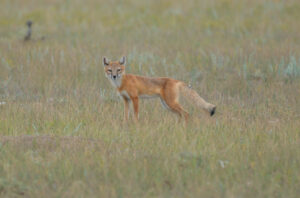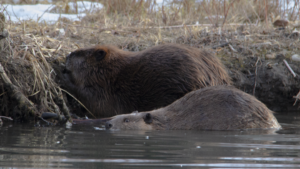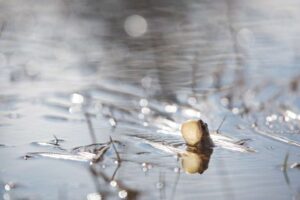Thoughts of springtime are usually accompanied by images of cotton-tailed bunnies munching on verdant buds and freshly grown grass. But there’s more to these hopping carrot lovers than meets the eye. For instance, did you know that hares and rabbits are distinctly different animals?
To brush up on your knowledge about these symbols of springtime, here are a few fun facts about the rabbits and hares you might spy in Alberta this spring:
- The difference between rabbits and hares can be easily observed in their respective sizes. Hares typically have larger ears and hind feet, while rabbits are smaller in scale. Additionally, rabbits are more social animals, while hares are less social and more skittish.
- Similarly, another difference between hares and wild rabbits is that the coats of the latter remain one colour (usually grey or brown) all year round, while the former changes from brown in the summer to white in the winter in an effort to blend in with their surroundings.
- Baby rabbits are called ‘kittens’ or ‘kits’, while infant hares are known as ‘leverets’.
- With the way that rabbits’ and hares’ eyes are positioned on their heads, they are afforded a complete 360 degree field of vision. This lack of visual blind spots comes at a price, though, as their depth perception is shoddy.
- Looking to spot some hopping four-legged friends in Alberta this spring? Keep an eye out for the following critters, all of which are native to the province:
- Mountain cottontail rabbits are AB’s resident rabbit, and an adult rabbit typically grows to weigh just over 2.5 lbs. They can be easily identified by their shorter ears and hind feet, as well as their grey-brown colouring that gives way to a white coat on their bellies.
- Just like the name suggests, the snowshoe hare’s hind feet allow the animal to seemingly float above deep snow, instead of letting it sink into the cold snow. This allows for quicker transportation and a higher level of agility when dodging predators.
- Though the name may be misleading, the white-tailed jackrabbit isn’t actually a rabbit by definition. This hare typically grows to weigh about 7.5 lbs., and can generally be found in southern Alberta’s grassland, parkland, and foothill regions.
By Giselle Wedemire, AIWC Volunteer
Sources: AEP Alberta, ThoughtCo., National Geographic







